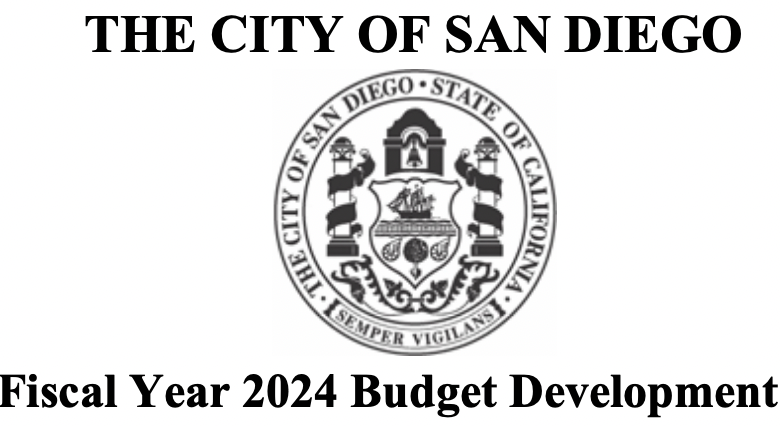Each year, we work with the City of San Diego to ensure that as many bike projects get funded as possible in the City’s budget. We just submitted our budget requests for Fiscal Year 2024, which stretches from July 2023 to June 2024. This year, we teamed up with San Diego's Vision Zero Coalition to submit a list of recommendations that reflects the priorities of nine different organizations, including Circulate San Diego, AARP California, the Climate Action Campaign, SD350, BikeSD, the San Diego Mountain Biking Association, City Heights CDC, and Families for Safe Streets San Diego. We’ll be working hard from now until June to get as many of these requests funded as possible. Read about what we’re working on below, then join us in the fight!
1. Close Ten Miles of Critical Bikeway Network Gaps per Year with Out-of-Cycle Resurfacing
San Diego currently only installs bikeways when it is resurfacing roads, and roads are only resurfaced on a seven year schedule. Problematically, this strategy leaves essential bike network connections on dangerous roads incomplete for years, even as high-quality bikeways are built on both sides of them. Furthermore, if different sections of a road are resurfaced on different schedules, the City may never find an opportunity to implement a continuous bikeway on the full length of a corridor.
We’re asking for $2 Million in funding for the Transportation Department to resurface roads with bikeways outside of this seven year cycle, so that bikeways can be installed where they’re most needed, instead of where they’re most convenient.
Since the Transportation Department currently spends approximately $200,000 per mile implementing Class IV bikeways during resurfacing. $2 Million in funding would enable Transportation to build ten miles of critically needed safe bikeways each year!
2. Increase the Quick-Build Bikeway Team’s Goal to Eighteen Miles per Year
San Diego’s Quick-Build Bikeways team, or Safe and Sustainable Transportation for All Ages and Abilities Team (STAT) is currently charged with building nine miles of quick-build bikeways per year. Quick-build bikeways are built with cheap, movable materials like paint and flexible bollards, rather than permanent improvements like new concrete curbs and asphalt resurfacing. A great example of this is when the City removed a lane in each direction on Pershing Drive to implement bike lanes in the fall of 2021. We’re asking the city to double the funding and mileage target for this team.
3. Fix San Diego’s Most Dangerous Intersections
In Fiscal Year 23, the City improved ten of San Diego’s most dangerous intersections with lead pedestrian interval signals, high-visibility crosswalks, and improved lighting. With additional funding, the City should be able to improve at least 15 intersections in Fiscal Year 2023
4. Complete an Updated Bicycle Master Plan
San Diego’s Bicycle Master Plan has not been updated since 2013, at which time the safest, Class IV classification of separated bikeways was not used. To set San Diego on the right track towards its Climate Action Plan goals, this update should be begun as soon as possible. This plan should follow the lead of SANDAG and adopt the NACTO Urban Bikeway Design Guide as the design standard for all new bike facilities.
5. Install Physical Protection for All New Full-build Class IV Bikeways
Almost all recent Class IV separated bikeway projects in San Diego have used flexible bollards to separate bikeways from travel lanes. While flexible bollards are useful for demarcating space for bicyclists, they do not have any stopping power to prevent drivers from hitting bicyclists. All new full-build Class IV bikeways should use physical protection such as concrete curbs or inflexible bollards to separate bikeways from traffic lanes. This item would require increasing the Transportation Department’s budget for each new Class IV bikeway.
6. Study Lowering Speed Limits on Vision Zero Corridors using AB 43:
California Assembly Bill 43 (AB 43) was signed into law on October 8, 2021. This bill gives cities throughout the state more control over deciding how speed limits should be set. While cities like Los Angeles, Oakland, and San Francisco have already taken advantage of this law to study lowering speed limits on hundreds of roads, San Diego has yet to begin any systematic studies. In FY 2024, the City should begin by funding a study of reducing speed limits on San Diego’s Eight Vision Zero Corridors, as identified by Circulate San Diego’s 2015 report.
These corridors include:
Fifth Avenue
Broadway
El Cajon Blvd.
Euclid Avenue
Garnet Avenue
Imperial Avenue
Market Street
University Avenue
7. Increase Bikeway Maintenance
Potholes, poor pavement, and road debris pose a much greater threat to bicyclists than drivers.These hazards can seriously injure or kill bicyclists, while posing minimal risks to drivers. Transportation should dedicate a specific team of three staff members or contractors to conduct routine bikeway maintenance and respond to requests for service on bikeways. These staff members could be reassigned from existing staff, hired as contractors, or hired as new employees, depending on the city’s needs.
8. Invest in Education and Encouragement Campaigns for Vision Zero
Under Mayor Kevin Faulconer, the FY 2020 budget allocated $100,000 to Vision Zero education. The FY 24 budget should restore that funding. This campaign should consist of city-led education and encouragement programming for safe active transportation and public transit use, as well as grant funding for education programming provided by nonprofits and community-based organizations.
9. Begin Proactive Bike Rack Installation ($100,000):
Currently, businesses must request bike racks in the public right-of-way in front of their locations for racks to be installed. While there has been some progress under this system, there remains a persistent lack of safe bicycle parking throughout San Diego. Funding for bike racks should be doubled from $50,000 to $100,000, which would allow the Transportation Department to proactively install bike racks in high parking demand locations. Furthermore, we would like this additional funding to be used to contract with modular bike locker providers such as Oonee that can provide secure bike parking facilities to San Diegans at no cost to the city.
10. Strengthen Parking and Code Enforcement in Bikeways:
While the Transportation Department has made strides in building out San Diego’s bicycle network in the last year, the ridership and safety benefits of many of these new bikeways have been decreased by chronic issues with illegal parking and parklet installation in bikeways, particularly in the urban core. The city should either hire two new parking enforcement officers, or specifically reassign two existing parking enforcement officers to enforcement of illegal parking in bikeways in the urban core.
11. Expand Network of Scooter Corrals to Historically Disinvested Areas:
San Diego’s recent shared micro mobility device regulations have led to a dramatic
reduction in the areas of San Diego that are accessible by shared micro mobility. As of this September, scooter corrals remain only in Districts 1, 2, and 3, exclusively in the Downtown, Uptown, Ocean Beach, Mission Beach, Pacific Beach, and La Jolla communities. This contraction of parking locations limits access to this low-cost, low-emissions form of transportation for people living in most neighborhoods of the city, particularly historically underserved communities in Districts 4, 8, and 9. The Mobility Department must expand the network of scooter corrals into Districts 4, 8, and 9, targeting the areas with the highest bike propensity as identified in the 2013 Bicycle Master Plan.
Thanks for reading! We’ll let you know about the next opportunities to help us advocate for these essential issues.


